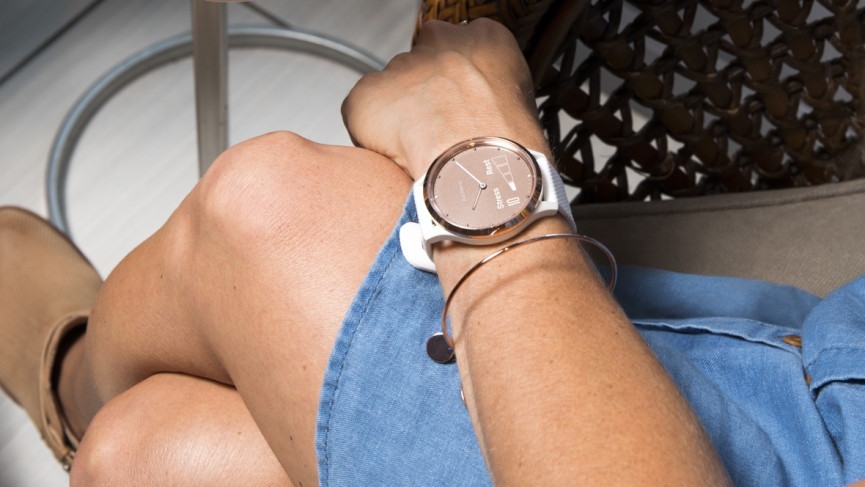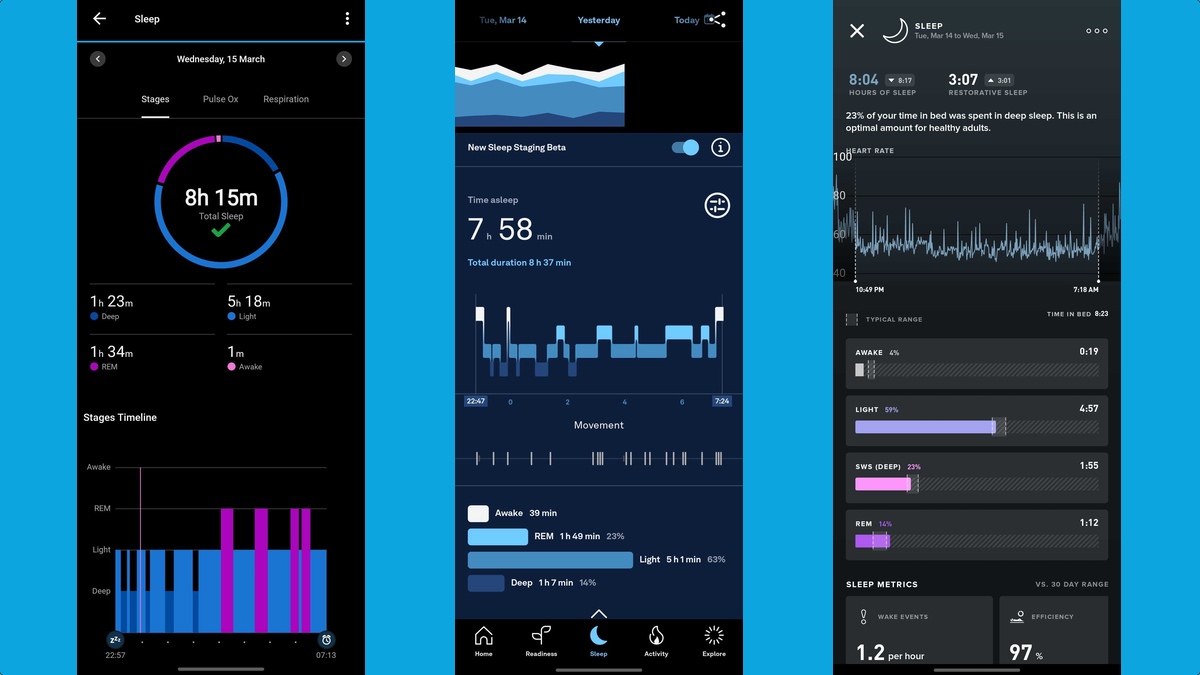
Using your Garmin for sleep tracking is one of the easiest ways to ensure you get the most out of your watch.
Not only has Garmin upped its game in recent years and started adding more helpful insights into your slumber, but sleep tracking now powers plenty of other metrics found on Garmin's most popular devices.
Instead of you just receiving a Sleep Score or Sleep Stages graph, then, Garmin now uses this sleep data to inform Training Readiness, Training Status and Body Battery.
But if you're new to tracking your sleep, or if you're just curious about how it all works, you might be wondering how exactly Garmin is getting this data - and how accurate it actually is.
Here at Wareable, we've been using and testing Garmin's sleep tracking for years, meaning we've got plenty of insight into everything you need to know about the feature. Let's dive into it.
How Garmin tracks your sleep
Wareable
Years ago, Garmin devices just used movement - tracked by motion-sensing accelerometers - and heart rate to analyze your sleep.
Since the company debuted 'Advanced Sleep Monitoring', though, heart rate variability - the time between each heartbeat - is now used to better measure your time awake and time spent in each sleep stage.
In order to assess whether you’re awake reading, asleep or up for a toilet break, and which stage of sleep you’re in while you slumber, Garmin uses a combination of analysis of photoplethysmography (PPG) and actigraphy (ACT) data.
This takes into account the following:
- Changes in heart rate; your heart rate data is more erratic in REM sleep and lower in non-REM sleep, for example
- Changes in heart rate variability; a rise in HRV can indicate your body's response to stress
- Any movement that's spotted by the accelerometer.
Your ‘sleep clock’ is triggered to start when you are still and your heart rate drops to the levels the watch believes you sleep at. Based on your HRV, this becomes more accurate the longer you wear the watch.
Other things that might affect the accuracy include stress, sleepwalking or if you’ve drunk alcohol, where your heart rate is raised and you’re potentially moving a lot.
It’s also important to note that some Garmin devices now measure blood oxygen saturation and respiratory rate during the night, but these don't have any effect on your sleep data and instead are presented separately.
Is Garmin sleep tracking accurate?
Wareable
This is a nearly impossible question to answer, given that the data logged by wrist-worn wearables has consistently been found to come up short versus a sleep laboratory's professional equipment.
With that said, things are improving all the time in this regard. And though we've often been critical of Garmin's sleep tracking in our in-depth reviews, such as in this Garmin Marq (Gen 2) review, the accuracy does appear to have turned a corner.
In a March 2023 test of Garmin's Advanced Sleep Tracking, we found that the data (logged on a Garmin Forerunner 265) was consistently in line with that tracked by Whoop and Oura, as shown above.
This recent improvement means we would now grade Garmin sleep data among the most accurate options on the market, though it is still unclear whether this is a consistent theme among all devices.
Wareable
Interestingly, you can see this marked improvement in our sleep trend graphs, as shown above.
While our Sleep Score was previously erratic and rarely lined up with estimations found by other trackers, this evened out considerably when we switched from a Garmin Forerunner 955 Solar to the newer Forerunner 265. All this, of course, was found with an identical sleep routine.
What Garmin sleep tracking reveals
Wareable
Each morning, you get a full report that reveals how much sleep you got in total, along with a breakdown of the time spent in different sleep stages: Deep, Light and REM, and also the duration of any periods where you’re awake.
This is available through Garmin Connect, with most newer models also allowing you to dive into recent stats on the watch itself, too.
You can return to the details by tapping the 'Sleep' or 'Sleep Score' widgets in Connect, and can also find the same graphs and trends by diving into 'Health Stats' from the sidebar menu.
Your sleep data is always presented in a timeline that shows when you fall asleep and when you wake up, rather than when you get into and out of bed. If you know there's an error here, you can manually edit these times in the Garmin Connect app, or on the Garmin Connect web tool.
Wareable
You also get a Movement timeline that shows your movement while you’re asleep - and a Pulse Ox timeline that shows the level of oxygen in your blood.
And, as we mentioned up top, Sleep History and recent Sleep Score estimations play a pivotal role in determining your Training Readiness (typically available on more premium models, such as the Fenix 7 and Forerunner 265).
There's also Body Battery on certain devices, which is basically a score from 0-100 that represents how well recovered and energized you are at any given moment. After a decent night’s sleep, you’re aiming for this to be topped up to 100.
How we test
